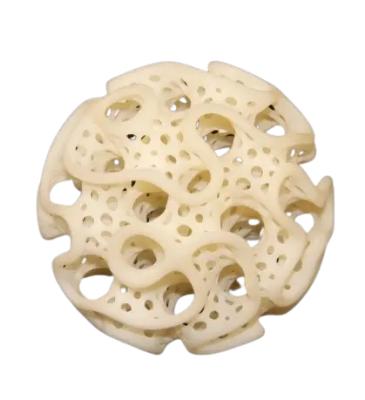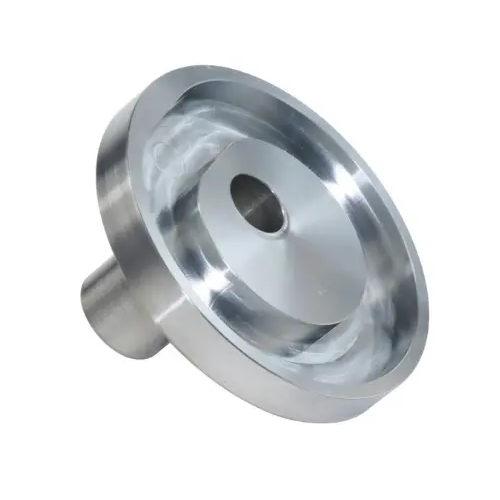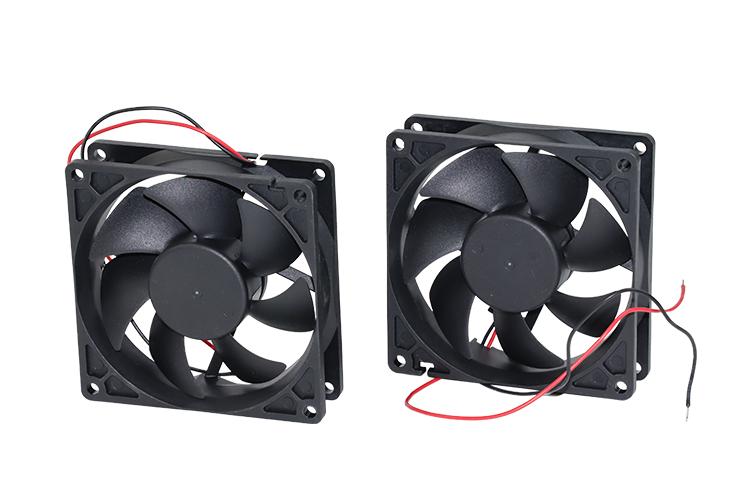1. SLA
SLA is an industrial 3D printing or additive manufacturing process that uses a computer-controlled laser to manufacture parts in a pool of UV-curable photopolymer resin. The laser outlines and cures the cross-section of the part design on the surface of the liquid resin. The cured layer is then lowered directly below the liquid resin surface and the process is repeated. Each newly cured layer is attached to the layer below it. This process continues until the part is complete.
Advantages: For concept models, cosmetic prototypes and complex designs, SLA can produce parts with complex geometries and excellent surface finishes compared to other additive processes. Costs are competitive and the technology is available from multiple sources.
Disadvantages: Prototype parts may not be as strong as parts made from engineering grade resins, so parts made using SLA have limited use in functional testing. In addition, when parts are subjected to UV cycles to cure the outer surface of the part, the part built into the SLA should be used with minimal UV and humidity exposure to prevent degradation.
2. SLS
In the SLS process, a computer-controlled laser is drawn from bottom to top onto a hot bed of nylon-based powder, which is gently sintered (fused) into a solid. After each layer, a roller lays a new layer of powder on top of the bed and the process is repeated.SLS uses a rigid nylon or flexible TPU powder, similar to actual engineering thermoplastics, so parts have greater toughness and precision, but have a rough surface and lack fine detail.SLS offers large build volumes, allows production of parts with highly complex geometries and creates durable prototypes.
Advantages: SLS parts tend to be more accurate and durable than SLA parts. The process can produce durable parts with complex geometries and is suitable for some functional tests.
Disadvantages: Parts have a grainy or sandy texture and process resin options are limited.
3. CNC
In machining, a solid block (or bar) of plastic or metal is clamped onto a CNC milling or turning machine and cut into the finished product by subtractive machining, respectively. This method typically produces higher strength and surface finish than any additive manufacturing process. It also has the full, homogeneous properties of plastic as it is made from extruded or compression moulded solid blocks of thermoplastic resin, in contrast to most additive processes, which use plastic-like materials and build in layers. The range of material options allows the part to have the desired material properties such as: tensile strength, impact resistance, heat deflection temperature, chemical resistance and biocompatibility. Good tolerances produce parts, jigs and fixtures suitable for fit and function testing, as well as functional components for end use.
Advantages: Because of the use of engineering grade thermoplastics and metals in CNC machining, parts have a good surface finish and are very robust.
Disadvantages: CNC machining can have some geometric limitations and sometimes it is more expensive to do this operation in-house than a 3D printing process. Milling nibbles can sometimes be difficult because the process is removing material rather than adding it.
4. Injection moulding
Rapid injection moulding works by injecting a thermoplastic resin into a mould and what makes the process ‘fast’ is the technology used to produce the mould, which is usually made from aluminium rather than the traditional steel used to produce the mould. The moulded parts are strong and have an excellent surface finish. This is also the industry standard production process for plastic parts, so there are inherent advantages to prototyping in the same process if circumstances permit. Almost any engineering grade plastic or liquid silicone rubber (LSR) can be used, so designers are not limited by the materials used in the prototyping process.
Advantages: Moulded parts made from a range of engineering grade materials with excellent surface finishes are an excellent predictor of manufacturability at the production stage.
Disadvantages: The initial tooling costs associated with rapid injection moulding do not occur in any additional processes or CNC machining. Therefore, in most cases, it makes sense to perform one or two rounds of rapid prototyping (subtractive or additive) to check fit and function before moving on to injection moulding.
Post time: Dec-14-2022






